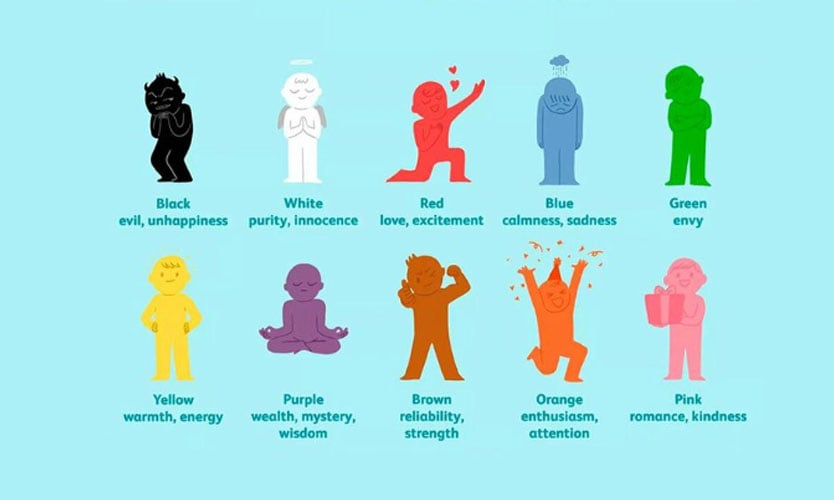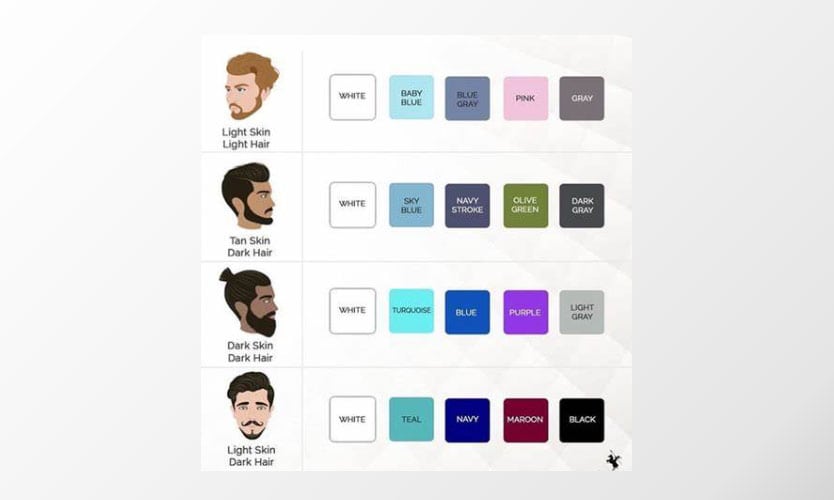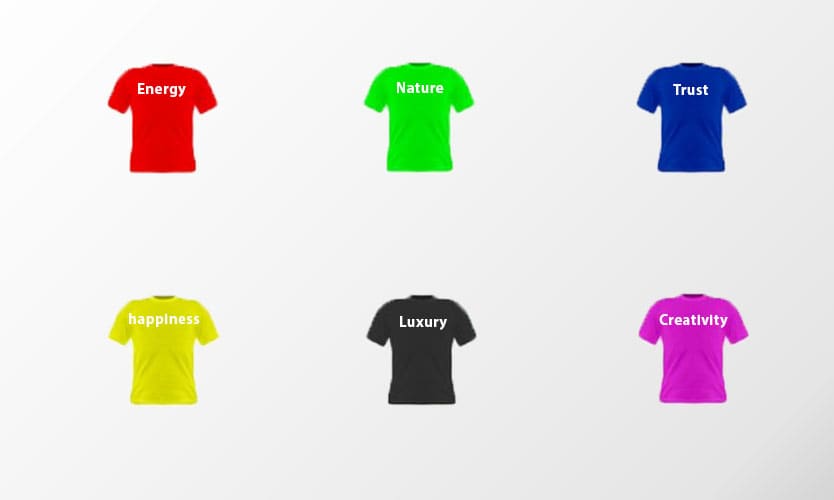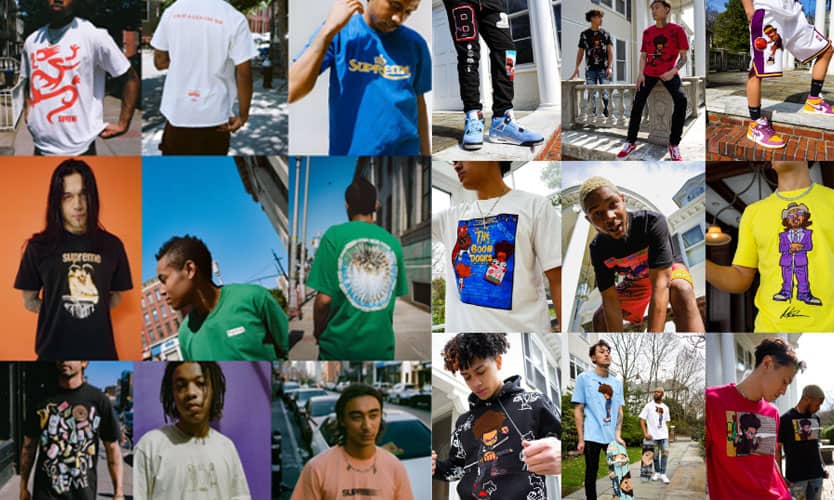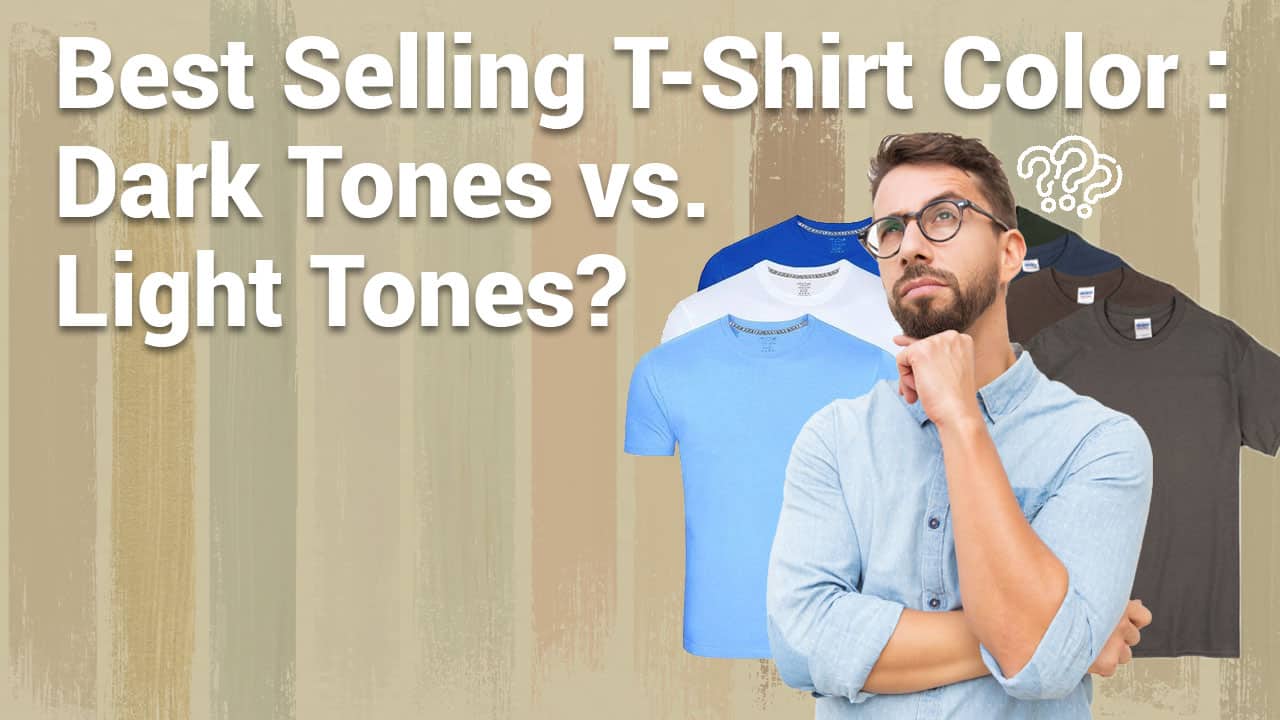
Best Selling T-Shirt Color : Dark Tones vs. Light Tones?
In the realm of fashion, the humble t-shirt emerges as a canvas for self-expression and style. Yet, one decision stands out among the rest—the choice of color or “Best Selling T-Shirt Color”. Beyond mere aesthetics, the color of a t-shirt holds the power to evoke emotions, shape perceptions, and tell a story. In this guide, we embark on a colorful journey, exploring the significance of t-shirt colors.
From the psychology of hues to consumer preferences, branding strategies, and the ever-evolving trends, we’ll unlock the secrets of making informed t-shirt color choices. Join us as we delve into the vibrant world of t-shirt colors and answer the age-old question: Dark Tones vs. Light Tones – What’s the Best Selling T-Shirt Color?
#1 The Psychology of Color
1.1 Understanding Color Associations
Color is a language unto itself, a powerful tool that speaks to our emotions, perceptions, and sensibilities. It holds the capacity to evoke a wide array of feelings, messages, and psychological associations. Understanding these associations is key to comprehending the impact of color choices in the world of t-shirts.
1.2 Perceptions of Dark Tones
Dark tones, such as black and navy, often exude a sense of sophistication, authority, and formality. These colors are seen as elegant and serious, invoking feelings of prestige and timelessness. In the realm of fashion, dark-toned t-shirts can be perceived as the choice for those who want to make a strong, stylish statement. We often associate them with professionalism and luxury. However, they can also convey an air of mystery and even rebellion, making them versatile choices for various fashion sensibilities.
1.3 Perceptions of Light Tones
Conversely, light tones, including white and pastel shades, are often linked to simplicity, purity, and positivity. These colors create a sense of refreshment, calm, and approachability. In fashion, we associate light-toned t-shirts to the ability to exude a friendly, inviting aura. They are commonly seen as suitable choices for casual, everyday wear, providing a sense of comfort and ease. Light tones can make the wearer appear approachable and cheerful, reflecting a more laid-back and relaxed style.
These contrasting perceptions of dark and light tones form the foundation of the t-shirt color debate. Whether you’re looking to make a bold, stylish statement with dark tones or project an inviting, casual image with light tones, the choice of color carries significant weight in the world of t-shirt design and personal style.
#2 Consumer Preferences: Dark vs. Light Tones
2.1 Influence of Culture, Age, Gender, and Personal Style
The choice of t-shirt color is highly subjective and varies greatly from one individual to another. Best selling t-shirt colors hugely depends on these influences. Several factors come into play, influencing these preferences. Understanding how culture, age, gender, and personal style impact color choices is essential in the world of t-shirt fashion.
2.2 Cultural Nuances
Different cultures have unique color symbolisms. For instance, in Western cultures, white often symbolizes purity, while in some Asian cultures, it represents mourning. Understanding these cultural nuances is vital for businesses with a global reach. A color that resonates positively in one culture might carry a different meaning in another.
2.3 Age and Gender Trends
Age and gender play a significant role in t-shirt color preferences. Younger individuals often gravitate towards brighter, trendier colors, reflecting their dynamic and fashion-forward sensibilities. In contrast, older consumers may prefer classic, subdued hues, emphasizing timeless elegance and simplicity. Additionally, while gender stereotypes have traditionally influenced color choices, these stereotypes are evolving. Modern consumers increasingly break free from gender-based color restrictions, embracing colors based on personal taste and expression.
2.4 Seasons and Occasions
The season and the occasion are additional factors that sway t-shirt color preferences. In spring and summer we favor the light, pastel shades for their ability to provide a refreshing, cool feeling in warm weather. In contrast, dark, rich colors tend to be more common in fall and winter, as they evoke a sense of warmth and coziness. Occasion matters too; casual t-shirt choices may have different color preferences compared to t-shirts intended for formal events.
To provide examples of how these factors impact t-shirt color choices, consider the following scenarios:
- In Western countries, younger individuals may opt for bold and bright t-shirt colors during summer, while older generations might stick to classic whites and neutrals.
- In fashion-forward urban settings, people might embrace a wide range of trendy colors, regardless of gender norms.
- On the other hand, for formal events such as weddings or corporate meetings, classic dark tones like black and navy may be preferred.
The intersection of culture, age, gender, personal style, and seasonal considerations makes the world of t-shirt color choices wonderfully diverse. By acknowledging and embracing these influences, individuals and businesses can cater to a wide range of preferences, ensuring that t-shirts appeal to a broad and diverse audience.
#3 Best selling t-shirt color and Branding
3.1 The Impact of Color on Branding and Brand Identity
The importance of color in branding cannot be overstated. Colors are not just visual elements; they are powerful tools that communicate emotions, messages, and identity. In the world of branding, the choice of color carries significant weight and can profoundly influence a brand’s identity and how it is perceived by consumers. So your best selling t-shirt color must is linked to your brand identity.
3.2 Consistency in Color Choices
Consistency in color choices across a brand’s product line and branding materials is essential. When a brand maintains a consistent color scheme, it fosters a strong and recognizable brand identity. This consistency helps customers easily associate products with the brand, creating a sense of trust and reliability.
3.3 Conveying a Message Through Color
Colors serve as a language in branding, enabling brands to convey specific messages and evoke desired emotions. Here are a few examples of how brands use color strategically:
- Red: Red is often associated with energy, passion, and excitement. Brands like Coca-Cola use red to create a sense of enthusiasm and vitality in their messaging.
- Green: Green is linked to growth, nature, and eco-friendliness. Companies like Starbucks incorporate green into their branding to emphasize their commitment to sustainable practices and a connection to nature.
- Blue: Blue conveys trust, reliability, and professionalism. Many financial institutions, such as American Express, use blue to instill confidence and credibility in their services.
- Yellow: Yellow exudes positivity, happiness, and warmth. Brands like McDonald’s utilize yellow to create a welcoming and cheerful atmosphere.
- Black: Black is often associated with luxury, sophistication, and elegance. High-end fashion brands like Chanel leverage black to convey a sense of timeless style and exclusivity.
- Purple: Purple is linked to creativity, luxury, and innovation. Brands like Cadbury use purple to communicate their commitment to quality and creativity in their products.
Branding extends beyond the mere selection of a color; it involves the strategic use of color to align with the brand’s core values and to establish a deep emotional connection with customers.
For instance, a brand promoting eco-friendly practices may choose earthy, natural tones like forest green and organic brown to convey sustainability. This choice aligns with their message of environmental responsibility. So here the best selling t-shirt color will be green. On the other hand, a brand focused on youthful and vibrant energy might incorporate bold, dynamic colors into their branding to communicate a sense of excitement and vitality.
In essence, color is a tool for brand storytelling. Brands carefully select colors that resonate with their target audience, reflect their values, and convey the desired message. In doing so, they create a visual identity that goes beyond aesthetics, leaving a lasting impression on their customers.
#4 Trends in T-Shirt Colors
4.1 Exploring Recent T-Shirt Color Trends
T-shirt color trends, much like fashion trends in general, are dynamic and ever-evolving. Staying current with these trends is crucial for both fashion enthusiasts and businesses. What’s in vogue today might be considered outdated tomorrow. Let’s take a closer look at some recent t-shirt color trends.
4.2 The Appeal of Neutrals
Neutrals, such as beige, oatmeal, and soft gray, have gained significant popularity in recent times. The charm of neutrals lies in their versatility and simplicity. These colors serve as the perfect backdrop for various designs and styles, making them a favored choice for both individuals and businesses.
4.3 The Resurgence of Bold Colors
Vibrant, bold colors have been making a striking comeback. Hues like coral, teal, and mustard are becoming fashionable choices. These colors make a statement and are often preferred by those looking to add a pop of color and energy to their wardrobe. Whether it’s a bold monochromatic t-shirt or a vibrant pattern, bold colors have rekindled interest in the world of t-shirts.
4.4 Sustainable Shades in Focus
As environmental awareness continues to grow, t-shirt colors associated with sustainability have been gaining traction. Shades like forest green and organic brown align with eco-friendly branding. These colors convey a message of responsibility and a commitment to protecting the environment. Brands that prioritize eco-conscious practices use sustainable shades to mirror their values, creating a connection with customers who share their concerns.
4.5 The Timeless Allure of Classic Whites and Blacks
Of course, classic white and black t-shirts are timeless and never truly go out of style. They continue to be the best selling t-shirt color for their simplicity, versatility, and ability to pair well with any outfit. These staples are essential components of any wardrobe, providing an elegant and understated backdrop for various designs and styles.
4.6 Balancing Trends with Timelessness
While staying updated with trendy colors can be exciting, it’s equally important to maintain a selection of classic, timeless options. The key to mastering the art of t-shirt color choices is to strike a balance between following trends and offering those classic hues that cater to a broad range of customers. Trends come and go, but a brand’s identity should remain enduring. By offering both trendy and timeless options, individuals and businesses can accommodate a diverse range of preferences and ensure that their t-shirts remain relevant and appealing to a wide audience.
#5 Navigating the Colorful Landscape: Practical Tips
5.1 Choosing T-Shirt Colors with Confidence
Selecting the right t-shirt colors can be a nuanced process, but with a few practical tips, you can make informed choices that resonate with your audience and your brand. Your best selling t-shirt color will depend on your designs and vision.
5.2 Know Your Target Audience
Understanding your target audience is paramount. Conduct surveys and research to identify their color preferences. Your audience’s age, culture, and style play a significant role in their color choices. By knowing your customers, you can tailor your t-shirt colors to match their tastes and create a more appealing product.
5.3 Balance Trends with Brand Identity
While it’s essential to stay current with color trends, don’t compromise your brand’s identity. We define brands by the consistency of their messaging and their unique values. Balancing trendy colors with timeless ones is a smart strategy. This way, you can cater to the ever-evolving tastes of your audience while maintaining your brand’s core image.
5.4 Prioritize T-Shirt Quality
The quality of the t-shirt itself is equally important. So before choosing your best selling t-shirt color, think about the fabric’s feel and how well the color holds up after multiple washes can impact your customer’s overall satisfaction. High-quality t-shirts not only provide comfort but also leave a positive impression on your customers, encouraging repeat business and positive reviews.
5.5 Versatility Matters
Consider the versatility of the color you choose. Some colors work well with a variety of designs and styles, while others may be more limiting. Opt for colors that can be used for a broad range of t-shirt offerings. Versatile colors are cost-effective and make inventory management more straightforward.
5.6 Embrace Personal Style and Taste
As an individual or business owner, your personal style and taste will influence your choices. Trust your instincts, but balance them with market research and your target audience’s preferences. Your unique perspective can be a valuable asset when selecting t-shirt colors that align with your brand’s identity and the messages you wish to convey.
Navigating the world of t-shirt colors is a colorful journey where personal preference meets consumer demand. By knowing your audience, balancing trends with brand identity, prioritizing quality, embracing versatility, and incorporating personal style, you can confidently choose t-shirt colors that appeal to a wide spectrum of customers. Whether you’re a business owner seeking to cater to your target audience or an individual looking to make informed fashion choices, these practical tips will guide you through the colorful landscape of t-shirt color selections.
Conclusion
In the world of fashion, the choice of t-shirt color is more than a simple aesthetic decision; it’s a statement. As we’ve navigated through the psychology, consumer preferences, branding, and trends related to t-shirt colors, it’s evident that color wields a remarkable power – the power to evoke emotions, convey messages, and build identities.
To summarize, we’ve learned that:
- The psychology of color plays a pivotal role in how t-shirt colors are perceived. Dark tones exude elegance and mystery, while light tones invite simplicity and positivity.
- Consumer preferences are influenced by culture, age, gender, and personal style. Recognizing these factors helps individuals and businesses cater to a diverse audience.
- Color and branding are inseparable. Brands strategically choose colors to convey messages, foster emotional connections, and maintain brand identity.
- Trends in t-shirt colors are ever-changing, from the appeal of neutrals to the resurgence of bold shades. Balancing trends with timeless options is key.
- Practical tips for choosing t-shirt colors involve knowing your audience, balancing trends with brand identity, prioritizing quality, embracing versatility, and incorporating personal style.
The impact of color in fashion and branding is undeniable. Because it’s a language that transcends words, allowing us to express ourselves and connect with others on a deep, emotional level.
As you embark on your journey through the colorful landscape of t-shirt colors, and find you best selling t-shirt color, remember that each hue carries a unique story. The canvas is yours to paint. Whether you choose classic white and black tees, trendy bold shades, or sustainable earthy tones, do so with confidence. Make informed choices, and let your t-shirt colors be a reflection of your style, values, and identity. The world of t-shirt colors is your palette, waiting for you to create your masterpiece. Start your T-shirt Business Now!


